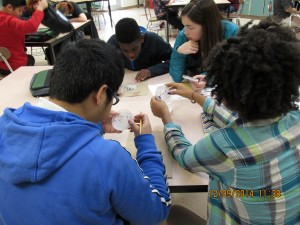In December, I shared my Kenan lesson with my students. The video above gives an overview of the lesson.
 |
|
We started the “How Has STEM Changed Evolution Today?” unit with a seed germination lab to model selective breeding. |
| While we were waiting for our seeds to grow, the student completed an online simulation showing how genetically modified organisms are developed as well as two interactive games to review Punnett squares. The webquest activity was set up with videos and online interactive tools as well as built in stops to get a teacher stamp for completion of small sections. I liked the required teacher stamps because they allowed me to monitor the progress of each student. |
| When the seeds germinated, the students checked their germinated seeds and compared their outcomes with their Punnett square predictions. Many of their predictions were surprisingly accurate. After the seed lab was completed, we moved onto new and developing technologies in the field of biotechnology. Our topics included: genetically modified pets, de-extinction projects, biomining, and GM foods. Everything that I had planned for this lesson took longer than I expected. I had to change the online article reading to “speed dating the article.” I gave the students 15-20 minutes to read, look at videos, and observe infographics linked to the article. The students liked the idea of “speed dating” an article. They also liked the multimedia connections to each article. The responses in the video show the group responses to two of the topics that were covered. |
